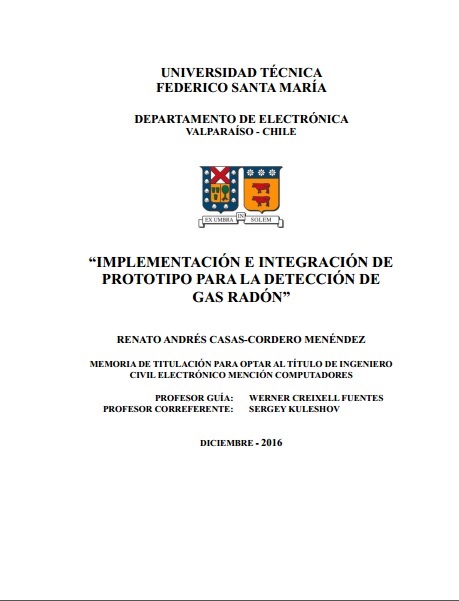Radon Detector and experiments with earthquakes in Chile
Introduction
In the late 1960s and early 1970s reports primary from Russia and China indicated that concentrations of radon gas in the air apparently changed prior the occurrence of nearby earthquakes. Since then many studies have been made, showing that most of the changes in concentration of radon occurs within 30 days prior to the earthquake. This happens because when seismic activity occurs, more pores and micro-fractures are produced inside the underground rocks, leaving more space for the radon gas to emerge to the surface.
Given the fact that Chile is one of the most seismic countries in the world, a radon detector is being fabricated in order to test this hypothesis in Chile. The idea is to create a detector that could be easily replicated and installed along the country.
Radon presence in Chile
There are studies of natural radiation measurements in Chile, centered mainly in the measurement of radon gas concentration. According to those studies, in Santiago there is a mean level of 25[Bq/m^3] with standard deviation of 16[Bq/m^3]. Even though it is a small rate, in the same study measurements were made inside of mines, reaching a rate due to radon up to 4.700[Bq/m^3]$. This evidence points toward the possibility of using radon as an earthquake precursor in Chile.
As an example of possible test of the hypothesis, based in radiometric surveys made by the Chilean Government, there is a good presence of Uranium in the Chilean Coast Range. This is coincident with the last big earthquake near to Iquique city which happened on April 14, 2014, with epicenter in $19.642° S,70.817°W and a magnitude of $8.2[M_W] in the moment scale.
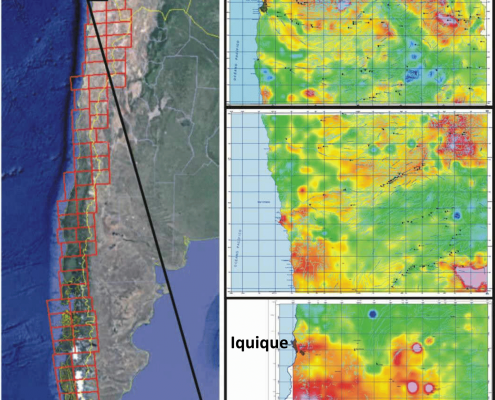
Figure: Uranium presence in the north of Chile. The star marks the epicenter of the last big earthquake in the zone
Uranium and Radon Decay
The Uranium decay chain is very long, with Radon as one of the daughters, which decays through alpha emission.
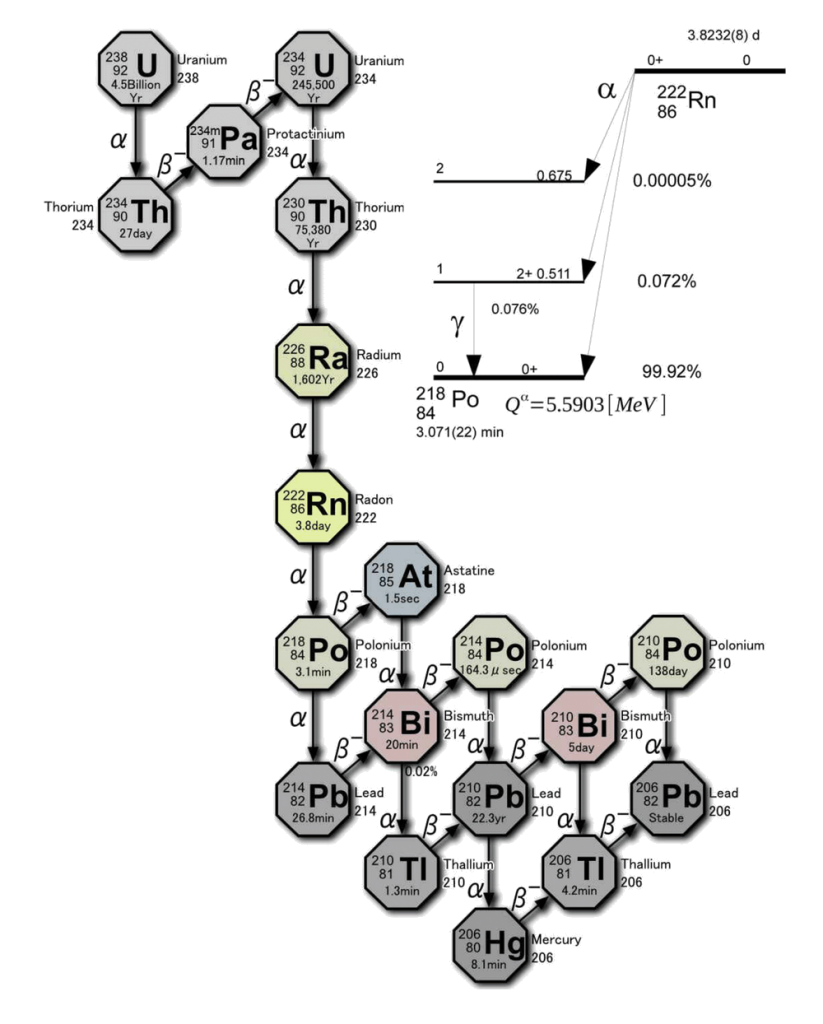
Figure: Uranium decay chain and Radon-222 decay scheme
The Radon Detector
The main objective of the project is to integrate and develop a detector that will obtain data in real time about the amount of radon gas in the environment. This is accomplished by detecting the alpha particles that are produced during the decay of radon. The alpha particle is measured by a Shashlik detector made by near to $200$ plates with a size of $0.8\times38.2\times38.2[mm]$ from plastic scintillator made of Polystyrene doped with pTP and POPOP. The light is then collected by Kuraray $Y11(200)$ WLS fibers and directed to $2$ Silicon Photomultipliers located at both ends of the Shashlik.

Figure: Design of the first Radon Detector prototype.

Figure: Details of the detector’s assemble
The front-end electronics consists of a voltage multiplier that is used to polarize de MPPC, a signal amplifier for the MPPC output and a voltage regulator to supply the rest of the circuitry.
The main innovation in this project is the utilization of Multi Mixel Photon Multipliers, Hamamatsu MPPC S12572-100P. As they are very small (3[mm] \times 3[mm]), a light-guide has been designed in order to help the light that comes from the WLS fibers converge to this area.
Even though the detector is sensitive to different environmental sources of radiation, the main background signal is produced by cosmic rays. In order to distinguish if the detected particle is an alpha particle and not a cosmic ray, a set of 3 additional secondary detectors are installed that use the same technology. The difference with these secondary detectors is that they are isolated from the air, and therefore, from radon gas. This way, coincidence between detectors can be use to exclude Cosmic Rays from the measurements.
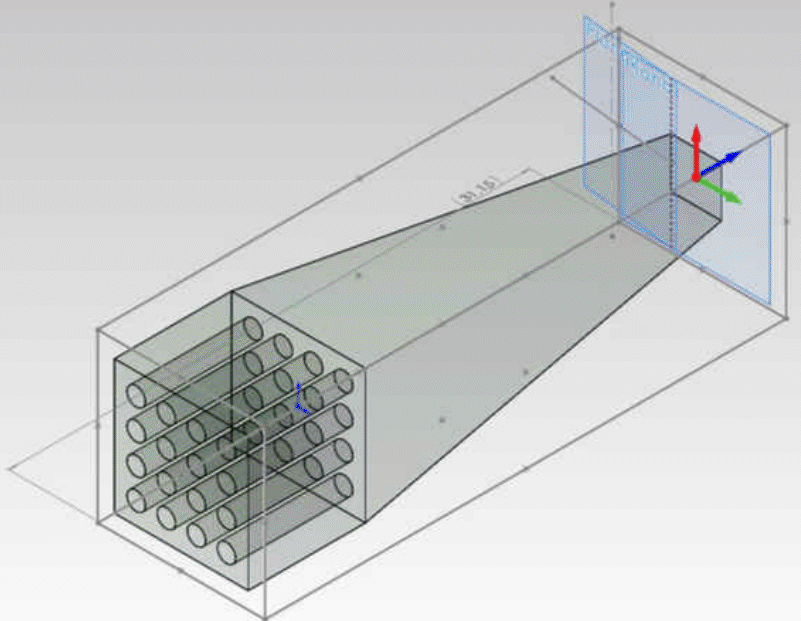
Figure: MPPC Light Guide .
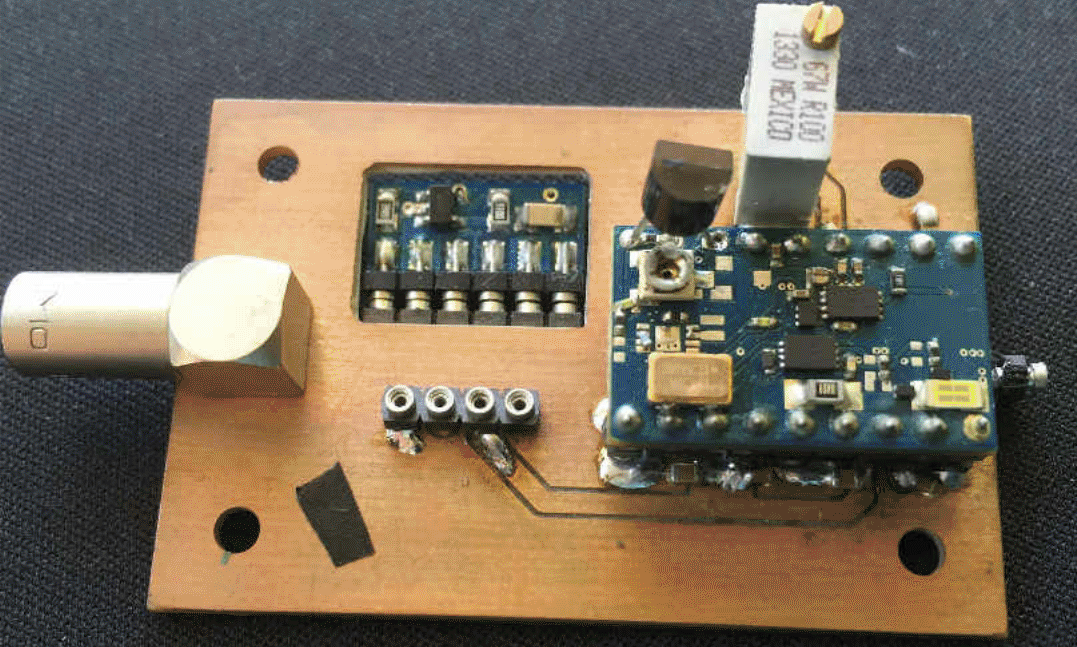
Figure: Amplifier and Cockroft-Walton circuitry.
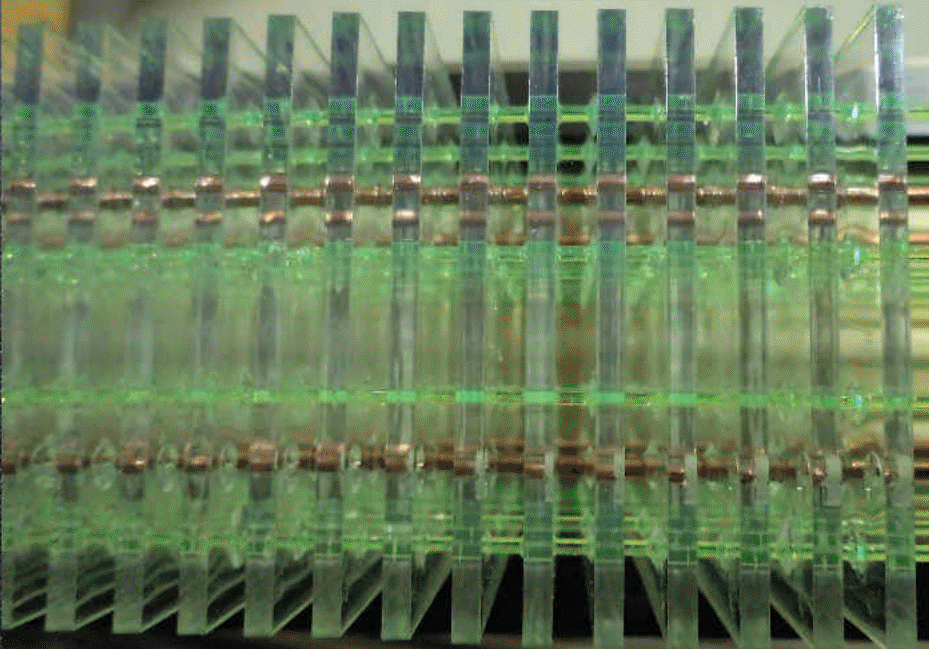
Figure: Shashlik detector array of plastic scintillators.
Data Analysis
A first version of the experiment ran from April 29, 2013 to February 24, 2014. This version contained the same detector technology but the readout was done using 2 Hamamatsu R3998-02 PMT and a CAMAC Lecroy 2249A QDC. No anti-coincidence system was used and no energy calibration was done, so in order to reject background data statistical arguments were used. Since the experiment was installed in a basement were the Radon accumulates easily, a rate in the order of $100[Bq/m^3] was expected. Given the fact that the air volume inside the detector is near to 5 times 10^-6[m^3], the expected rate due to radon was close to 5 times 10^-3 [Bq]. The mean measured rate by the system was approximately $3.5[Bq]$, so in order to measure Radon, according to Poisson statistics, an integration time of 160[h] was used.
In order to get information about the total energy deposited in the Shashlik, a geometric mean was calculated from the signal received in both PMT. In this way events with signal in only one of the PMT were discarded. Besides that, as a first approach to discard cosmic ray data, the data was selected from the maximum of the distribution. The data with low energy, was plotted.
A first approach to study the earthquake correlation with the increments on Radon rate was done, using seismic data from the GUC Network of the University of Chile, which is available on line. All nearby earthquakes (with epicenter within 100[km] of distance from the detector) with magnitude of III and IV were plotted chronologically.

Figure: Rate plot of events with geometric mean>100[QDC\:channel]. Integration time in both graphs is 160[h].

Figure: Rate plot of events with $geometric\:mean<80[QDC\:channel]$. This data belongs to alpha particles from Radon decay.}
.

Figure: Geometric mean of signal coming from PMT, for all the measured data. Also data cuts are shown in the picture.
Investigation and thesis
The work that was done during the fabrication and testing stages of the Radon Detector was the subject of a thesis made by electronic engineer student, Renato Casas-Cordero:

